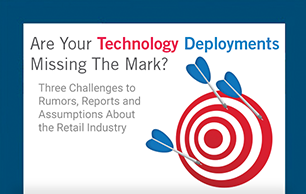The TAG HealthIT Leadership Summit delivered a no-nonsense discussion of IT realities in healthcare today. Focused on bringing real challenges to light and posing the tough questions, the Summit encouraged IT leaders to propose innovative solutions and grapple with obstacles facing healthcare today. Two topics of particular note were discussed:
AI in the plans, but not on the books
With all the discussion around artificial intelligence (AI) in all types of businesses, this HealthIT Leadership Summit boldly stated that while AI is in the plans, it is not yet in the books for healthcare. Far from a plug-and-play technology, AI requires “training” the machine how to interpret the data so that it can make predictions on its own. AI deployment demands human-led data evaluation, modeling and training in order to become an effective tool. For this reason, we’re still far away from a full AI implementation across healthcare.
Digital transformation pitted against HIPAA
.jpg?width=320&name=Untitled%20design%20(1).jpg) In the meantime, healthcare is progressing through a digital transformation that includes more fundamental pieces like digital data collection, digital security and other general technical advances in healthcare facilities. The medical community understands the value of digital data collection but is grappling with how to realize the digital transformation in light of HIPAA and security breaches of sensitive, personal data. Meanwhile, the paper-based collection system is highly inefficient and fails to deliver complete data to the cloud for use by tools like AI. Healthcare is vexed by this problem and seeking solutions that meet a vast array of security, performance and cost criteria.
In the meantime, healthcare is progressing through a digital transformation that includes more fundamental pieces like digital data collection, digital security and other general technical advances in healthcare facilities. The medical community understands the value of digital data collection but is grappling with how to realize the digital transformation in light of HIPAA and security breaches of sensitive, personal data. Meanwhile, the paper-based collection system is highly inefficient and fails to deliver complete data to the cloud for use by tools like AI. Healthcare is vexed by this problem and seeking solutions that meet a vast array of security, performance and cost criteria.
With many proposals, but no clear direction for the future, there are some things that healthcare providers can be doing to take advantage of technology to streamline operations, secure data and improve the patient experience. For example, healthcare providers need to start with a robust physical layer infrastructure to position themselves for success as they prepare to deploy new technologies. Cabling, electrical, switches and routers are all required to support mission-critical wireless, IoT and data applications. Then, the addition of Wi-Fi for operational as well as patient use can help create a better patient experience, from paperless registration to streamlined record keeping. Physical security technologies like access control and IP cameras help secure areas with patient information and medication while providing data for investigation in case of breaches. Sound masking technologies can enhance patient security and comfort by keeping conversations confidential.
These fundamental steps will set the stage for the technological advancements and directions that are determined in the future. In the meantime, the move toward the digital transformation, piece by piece, will deliver efficiency, cost savings and a better patient experience.




